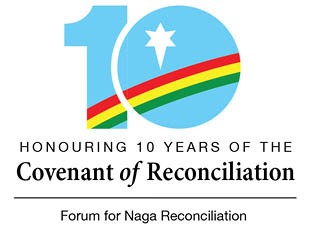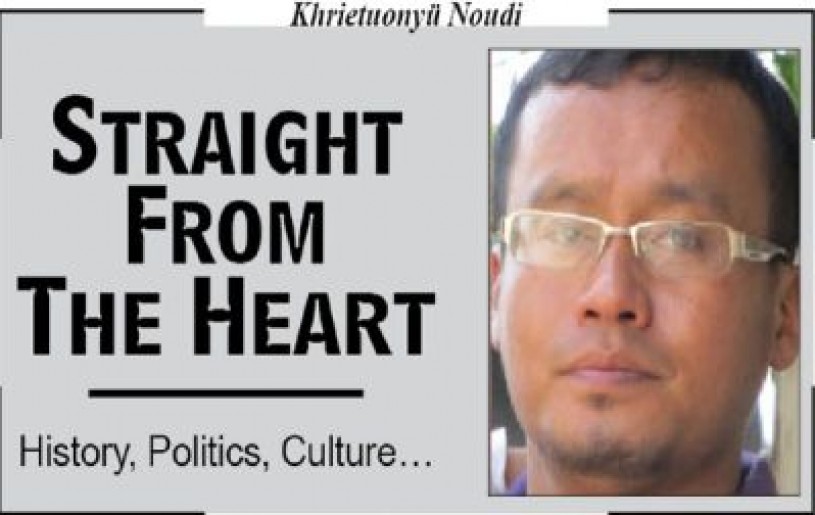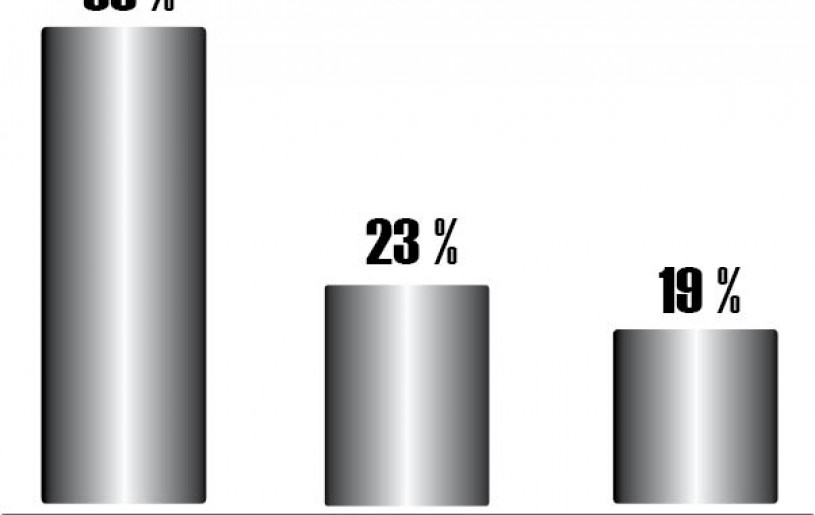
Zhoto Tunyi*
On 22nd February 2008, The Morung Express, carried an article that read: “Peace Meet carries on with empty chairs,” reporting that the Naga Peace Convention had few takers when the State election was at its peak. However, on 24th February 2008, the same newspaper had an article that read: “RECONCILIATION: A common road to freedom.” This article described the Naga Peace Convention of February 21-23, 2008 as: “It was explicit! It was concrete! It was moving and alive! It was an assertion that Naga history and political rights will not disappear into oblivion.” What caused the shift to occur between the two headlines? For some it was the divine intervention working in the hearts and minds of the people. It was in response to the call of God through a Divine Revelation given to the Shisha Hoho.
Amidst the Naga “factional” violence and killings, in March 2008, Forum for Naga Reconciliation (FNR) was named with the mandate of 39 Naga bodies from across Naga-Land and various Church Councils.
Journey of Common Hope
The primary mandate given to the FNR was to work for healing and reconciliation of Naga people through genuine forgiveness, mutual respect and shared understanding based on their historical and political rights. The FNR-led initiative became the most motivated since factional conflict took over the Naga national movement. It brought Naga Political Groups (NPGs) together for the first time after numerous splits of the Naga political groups competing over authority, control, and legitimacy. After several consultations the Covenant of Reconciliation (CoR) was signed on June 13, 2009, which drastically reduced the level of violence and bloodshed, and provided avenues that ceased armed confrontation. It was an extraordinary moment for transformation and healing of our broken land. The reconciliation process accomplished more in a span of 5-6 years than 3 decades of unsuccessful efforts to stop the inter-factional violence.
The signing of the CoR has set in motion the journey of Naga reconciliation where FNR members travelled to foreign countries and to various Naga towns and villages to strengthen the process. FNR brought all NPGs together through various platforms and meetings, leading to reconciling among themselves and several agreements being signed. Notable outcomes are the Naga Concordant, the Lenten Agreement. Apart from the closed-door meetings, with the help of international consultants and experts on peace and reconciliation, seminars and public meetings took place on several occasions. One was held at Agri-Expo in 2012 when a massive crowd of more than 40 thousand persons came together. Then, June 13, 2019, marked the 10th anniversary of signing the CoR, as the people continue to walk the ‘Journey of Common Hope.’
Naga Reconciliation: Causes, Caution, Concern and Critique
I have often wondered what we would have gained from the reconciliation process if all the stakeholders tried to be accountable, honest, and transparent with each other. Clearly, reconciliation cannot recede into the background if we are to have a future as a people which requires everyone’s efforts to carry it forward.
Interactions with stakeholders over the last eight years have shaped my perspective. There is a strong recurring voice from different stakeholders which say that despite the agreements and understandings that were arrived at during the Naga reconciliation process, the inability to implement them continues to be a roadblock. This has led to weakening of the reconciliation process and created a deep sense of disappointment and dampened the hopes of many.
The reconciliation process no doubt contributed to the relative peace and semblance of normalcy that we continue to enjoy. Yet, the burden for a political settlement has tried to limit and define the reconciliation process.
Reconciliation, broadly understood, touches all aspects of life and is multi-faceted and multi-layered. FNR is looking at a people’s perspective which embraces this broader expanse of peacebuilding. People’s reconciliation encompasses truth-telling and healing of past traumas. The reconciliation process itself needs to remain people centered and driven. It is crucial to underscore the fact that FNR is looking at reconciliation from a long-term people’s perspective which is must broader.
This article attempts to address the drawbacks, while at the same time highlight the potential of collective reflection and action in the context of an incomplete reconciliation process.
Forum for Naga Reconciliation
Due to the contextual situation in which FNR was formed, its initial work concentrated on the NPGs. FNR’s primary objective in the first phase was to end the “inter-factional” violence and enable the groups to reconcile on the basis of the Naga historical and political rights based on the spirit of genuine forgiveness.
The “compromised situation” in which the Naga reconciliation process was born weakens FNR’s natural ability to be fully effective. There are voices within and without pointing to FNR’s inability to push the NPGs in implementing the various agreements and commitments. It is, however, filled with optimism because it ended the violence that has been devastating the Naga people for decades.
However, FNR has a limited mandate and cannot be held accountable for all that seems to be in need of repair within Naga political life. FNR has demonstrated, through its inclusive approach, that reconciliation which transforms society involves a collective effort. The responsibility has to be equally shared by all stakeholders, including the common people.
One visible change in FNR’s strategy is to extend the spirit of reconciliation and better understanding to all the neighboring communities and nationalities which transcend geographical divisions. This has been amplified in the form of FNR organizing and celebrating the first Naga Day on 10 January 2018, attended by Nagas from all Naga inhabited areas. Events and landmark agreements like Naga Day and CoR have been significant in changing the political discourse of reconciliation.
Naga Political Groups
All NPGs are recognized for having the courage and foresight to come together despite the insurmountable difficulties that had to be overcome in order for the Naga reconciliation process to exist and come thus far. Their commitment is a necessity for the reconciliation process to proceed to its logical conclusion. The process is dependent on their willingness to cooperate, collaborate and work together.
The NPGs have had challenges, and in some cases failed to implement the agreements which have impeded the reconciliation process. The issues of accountability, self-interest and personal group glory have left the reconciliation process in a limbo. We have a problem with what Vaclav Havel called “telling the truth” to each other. The NPGs still have difficulty finding common ground to help the process by trusting and communicating with each other.
The NPGs have been urged to honor the CoR and to remain committed to addressing all outstanding issues. The FNR is steadfast in ensuring that all groups are included in the reconciliation process, as Naga Reconciliation is “neither selective, exclusive, nor is it about merging.” Rather it stands for mutual respect, acceptance and equality in rebuilding the wholeness of the Naga people.
Government of India
The situations prevailing are mostly self-created, then nourished and taken advantage of by external influences and conditions. The role of Government of India (GOI) cannot be absolved from this equation. It’s what governments do: create divisions, engineer defections and use force.
From the perspective of the third party, the State wouldn’t want the groups to come together, because unity strengthens the negotiating position of the Naga political groups. Perhaps it is something the government is not prepared to do. So, they are romancing at different levels with the NSCN then and now with the NNPGs. The unspoken thing is that they are romancing around the agreement, an agreement of which only the three parties are aware. Reconciliation as a means to unite a people is seen as a threat by the ‘other.’ A straightforward message for GOI would be to give peace and reconciliation a chance, and to stop its divide and rule tactics.
Naga Civil Society Organisations
FNR came about through the support of the Naga civil society organizations (CSOs), and carry their ‘mandate’ and representing the will of the Naga people. This mandate allowed the FNR to become a ‘national’ body in itself, making independent decisions on behalf of the Naga reconciliation process that it set in motion. FNR came together drawing people from various walks of life, including members of CSOs.
Over the years, Naga CSOs have been broken up along state, regional and tribal lines, thereby cracking their own united mandate. Since the FNR has managed to function independently, it has navigated its way through civil society cracks by dealing directly with CSOs instead of relying wholly on ‘apex bodies,’ of which there are many today. Relative peace has been brokered and a sense of peaceful atmosphere prevails not only among the NPGs but also among the Naga public.
But what remains is the huge gap between the Naga CSOs and the FNR in understanding where the reconciliation process is heading. The sad reality is that not only NPGs, but Naga CSOs need reconciliation, which is now a mirror image of the Naga people. Truth telling becomes a casualty and the trust deficit has come at a great cost. Therefore, mutual understanding and honest conversation between NPGs, as well as CSOs and the public is an essential ingredient for healing and restoring people’s dignity towards a holistic Naga destiny.
Naga People
The question is whether the people are aware of the FNR role and understand how it emerged during a very difficult and violent situation. The NPGs came into the reconciliation process and continued as a response to the deep need and frustration expressed by the people. Clearly, as long as the people pushed, the reconciliation process progressed. This push was evident from 2009-2014, but after the factional violence subsided, the public became complacent.
There is a misconception that reconciliation is only a form of conflict management. For some, reconciliation is seen as a pre-requisite to bring settlement. This makes reconciliation very narrow. But from the point of reconciliation the process has to continue beyond settlement. Reconciliation is not conflict management but conflict transformation and healing of our people. If it was settlement-centric process the FNR’s mechanism and activities would have been totally different.
It is evident that FNR’s goal is to bringing Nagas together based on the historical and political rights. The Naga Day on January 10, 2018 was seen as a symbolic action taken to mobilize Nagas Without Borders.
FNR needs to reach out more to the people and create structures that will make it possible for them to effectively communicate, mobilize and engage people across all sections of society.
Conclusion
In an increasingly confusing topsy-turvy world of the Nagas, where do or how do we address the need for the reconciliation process to be invigorated? The political developments, after signing the Framework Agreement and the subsequent talks between the Government of India with the 7 NNPGs, highlight what will become of the incomplete reconciliation among the Nagas.
The FNR’s main objective was to work for the complete cessation of factional armed violence, and all other forms of violence. Since the factional violence has significantly reduced, the FNR recognizes that the reconciliation process needs to go further. It must include forgiveness and healing, both between factions, as well as between factions and ordinary Naga men and women. Whatever political settlement is sought by the negotiating parties in New Delhi, whether NSCN-IM or the NNPGs, how costly it will be to ignore reconciliation within the Nagas?
History has lessons for all of us. Reconciliation needs to go beyond reaching a political settlement. It must initiate the process for imagining a new post-conflict Naga society. A political solution without reconciliation will only lead to further conflicts. Therefore, we need to disengage from the traditional concept of time (past-present-future) and reframe time in a relevant and contextual manner. It is “reconceptualising time” (future-past-present) by understanding first and visioning a shared future and learning from past experiences that we can meaningfully engage with our present realities.
I write here as a Naga seeking to persuade our Naga family that reconciliation is the only way forward as a people. We cannot be indifferent or neutral with respect to our common future. Only a radical spirit of reconciliation can free us and cause us to reach out generously, and lovingly towards each other. As emphasized by FNR in their latest communiqué, the path ahead is still in construction, the memory of what was our past and a deep desire to move on in the right direction of continual transformation is the yearning of all citizens. By doing this, we are awakening our conscience and renewing our commitment to reconciliation and peace.
About the author:
*Zhoto Tunyi teaches Political Science at Patkai Christian College (Autonomous) in Dimapur, Nagaland.
This is the thirteenth article of a 13-part series by the Forum for Naga Reconciliation on the 10th year of signing of the Covenant of Reconciliation (CoR) by Isak Chishi Swu, Chairman, NSCN/GPRN; SS Khaplang, Chairman, GPRN/NSCN and Brig (Retd) S Singnya, Kedahge (President), FGN on June 13, 2009. To celebrate the milestone, a cross section of authors will assess and highlight the impact of the CoR as well as examined, critiqued and encouraged the process in the series.





